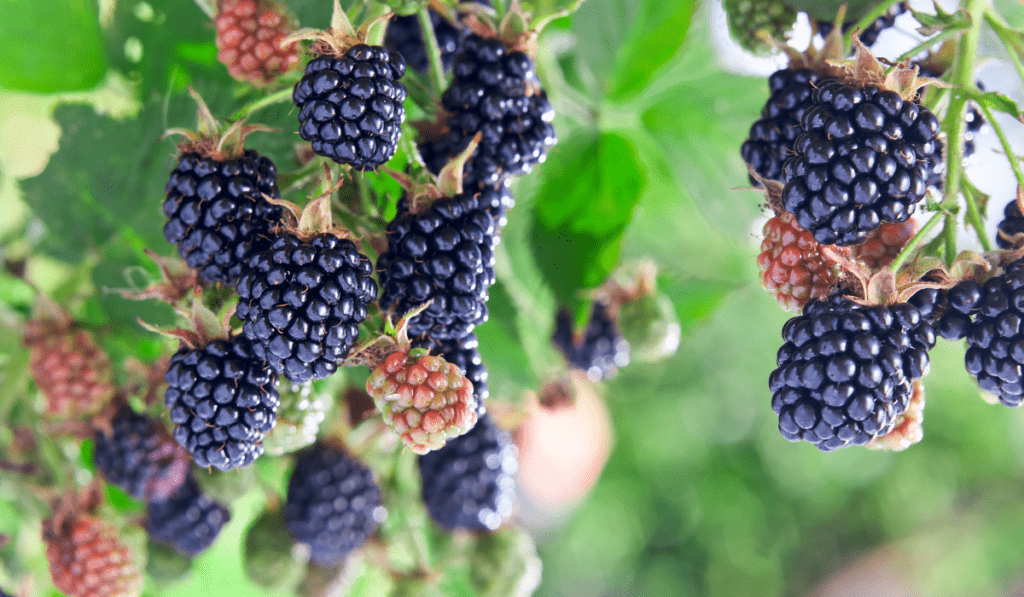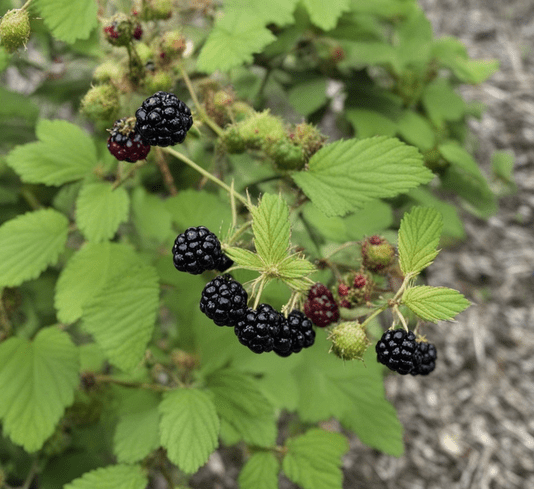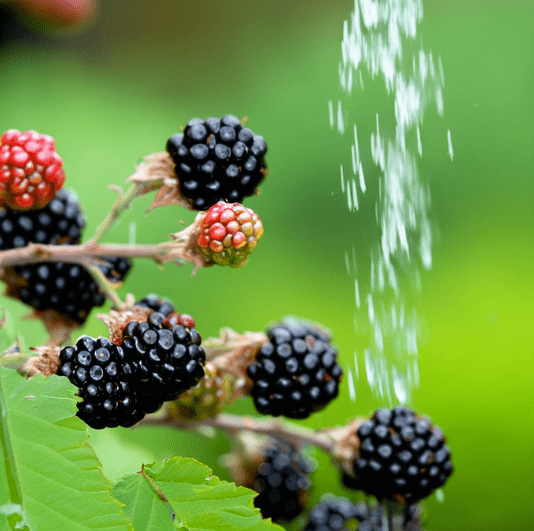Blackberry trees, known for their delicious fruit, are susceptible to various diseases that can affect their health and fruit production. It’s essential to recognize the signs of these diseases, implement proper management strategies, and take preventive measures to keep your blackberry plants thriving. Here are ten common diseases of blackberry trees along with information on how to identify, manage, and prevent them:
1. Anthracnose (Identification)
Anthracnose is a fungal disease that initially appears as small, water-soaked lesions on leaves, stems, and fruit.
Symptoms: Lesions later enlarge and turn dark brown to black with pink or orange centers. Fruit may become deformed and rot.
Management and Prevention: Prune and destroy infected plant parts. Apply fungicides labeled for anthracnose control during the growing season. Promote good air circulation and avoid overhead watering.
2. Powdery Mildew (Identification)
Powdery mildew is characterized by white, powdery growth on leaves and stems.
Symptoms: Leaves may become distorted and yellow. Affected fruit can be stunted and deformed.
Management and Prevention: Remove and destroy infected plant parts. Apply sulfur-based fungicides early in the season as a preventive measure. Ensure proper spacing for good air circulation.
3. Orange Rust (Identification)
Orange rust appears as orange-yellow pustules on the underside of leaves.
Symptoms: Infected leaves may develop yellow spots on the upper surface, which turn rusty orange on the undersides. The disease weakens plants over time.
Management and Prevention: Prune and destroy infected canes. Plant resistant varieties if available. Avoid planting near wild blackberry species, which can harbor the disease.
4. Crown Gall (Identification)
Crown gall is caused by bacteria and appears as round, rough, and woody growths on plant stems and roots.
Symptoms: Galls can vary in size and may interfere with the plant’s ability to take up water and nutrients.
Management and Prevention: Remove and destroy infected plants. Avoid planting in areas where crown gall-infected plants have grown previously. Use certified disease-free planting material.
5. Cane and Leaf Rust (Identification)
Cane and leaf rust presents as reddish-brown pustules on leaves and canes.
Symptoms: Rust-colored pustules can lead to leaf curling and can weaken the plant.
Management and Prevention: Prune and destroy infected canes. Apply fungicides labeled for rust control during the growing season. Promote good air circulation.
6. Botrytis Fruit Rot (Identification)
Botrytis fruit rot is a fungal disease that causes gray mold on ripe fruit.
Symptoms: Affected fruit becomes covered in gray, fuzzy mold, leading to fruit decay.
Management and Prevention: Harvest ripe fruit promptly. Avoid injuring fruit during harvest. Provide good air circulation to reduce humidity around plants.
7. Septoria Leaf Spot (Identification)
Septoria leaf spot appears as small, circular, water-soaked lesions with a white center and dark border.
Symptoms: Lesions can merge, causing extensive leaf damage and weakening the plant.
Management and Prevention: Remove and destroy infected leaves. Apply fungicides labeled for leaf spot control as needed. Avoid overhead watering.
8. Phytophthora Root Rot (Identification)
Phytophthora root rot is caused by a water-mold pathogen that infects plant roots.
Symptoms: Infected plants may show wilting, yellowing, and root rot. They may eventually collapse.
Management and Prevention: Plant in well-drained soil. Avoid planting in areas prone to flooding. Apply fungicides labeled for root rot control as a preventive measure.
9. Verticillium Wilt (Identification)
Verticillium wilt causes wilting and yellowing of leaves, often on one side of the plant.
Symptoms: Leaves may become necrotic and curl. Plants may gradually decline.
Management and Prevention: Remove and destroy infected plants. Plant resistant varieties if available. Avoid planting in soil previously affected by verticillium wilt.
10. Raspberry Bushy Dwarf Virus (Identification)
This viral disease can lead to stunted growth, yellowing of leaves, and decreased fruit production.
Symptoms: Infected plants may exhibit dwarfing, yellow streaking on leaves, and distorted fruit.
Management and Prevention: There is no cure for viral diseases. Remove and destroy infected plants promptly. Plant certified virus-free stock.
Prevention Strategies:
- Plant disease-resistant varieties when available.
- Practice crop rotation to reduce disease buildup in the soil.
- Ensure proper spacing and pruning to promote air circulation.
- Avoid overhead watering to reduce leaf moisture.
- Inspect plants regularly for signs of disease and take prompt action.
By identifying, managing, and preventing these common diseases, you can help ensure the health and productivity of your blackberry plants.



